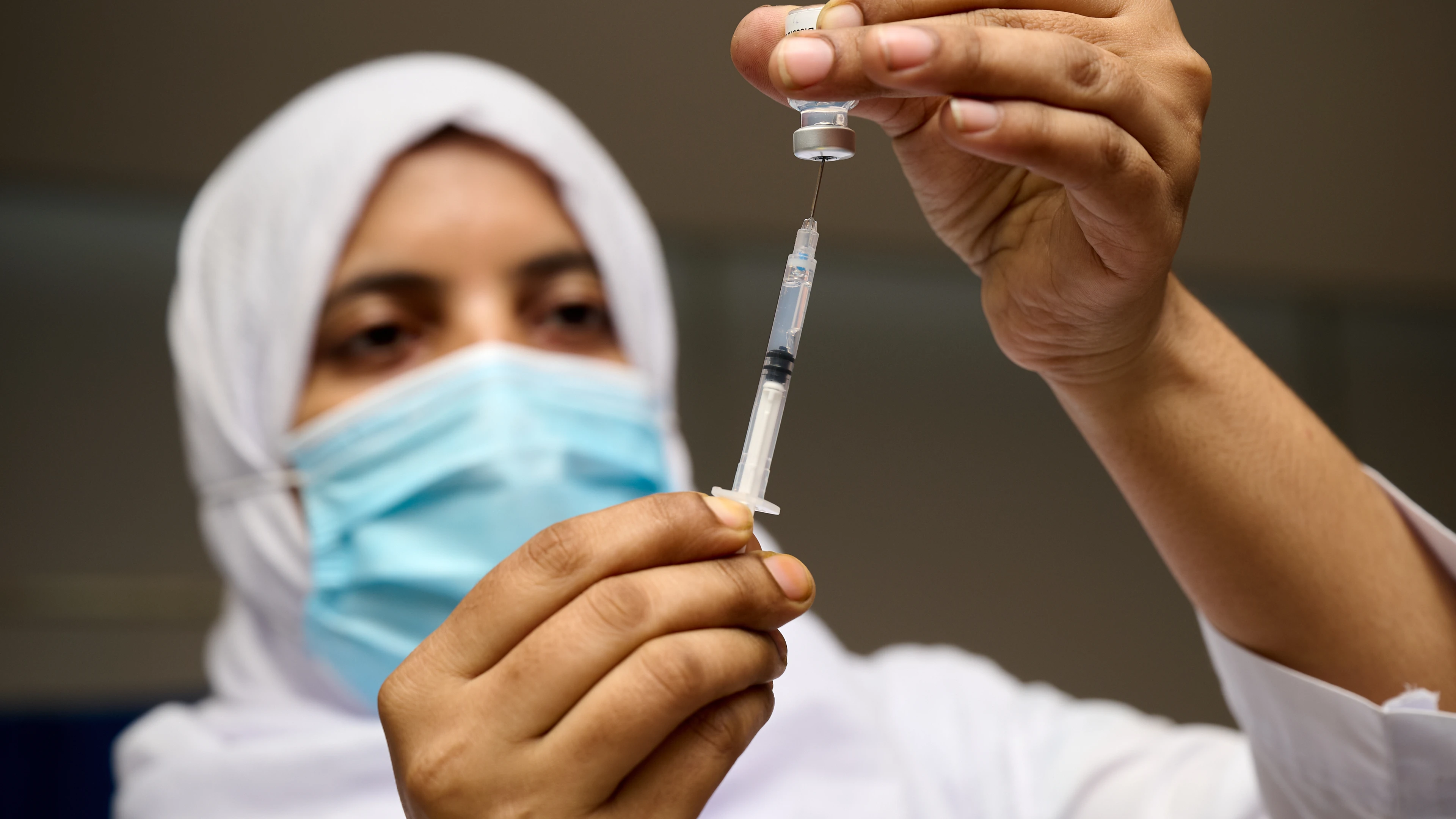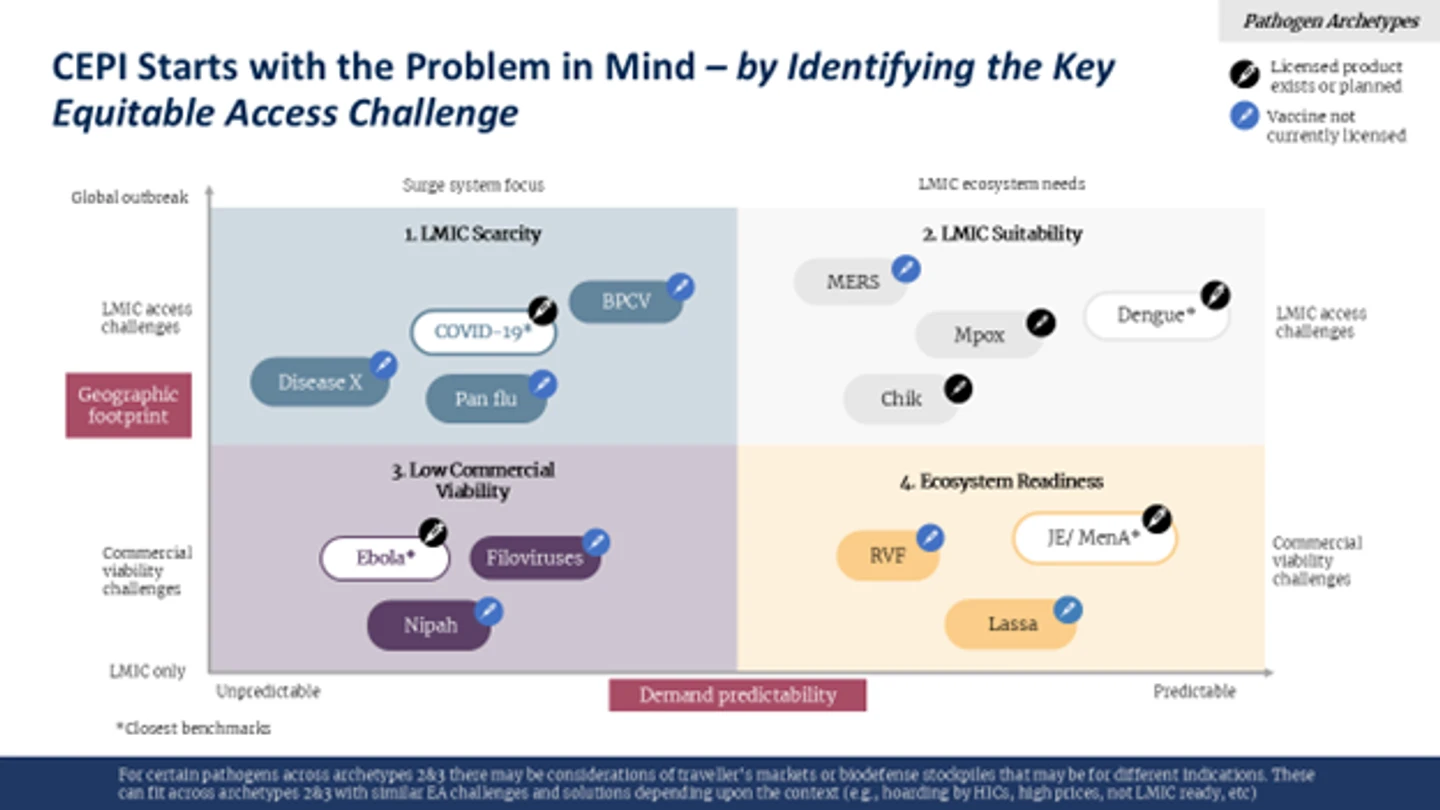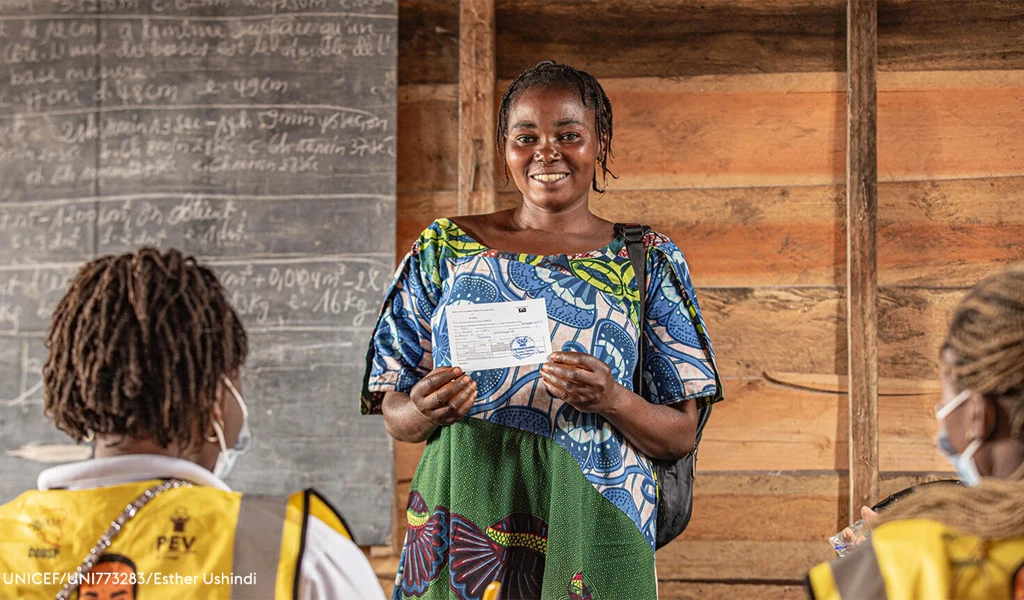A blueprint for access at the heart of outbreak R&D

Share
In 2014 the largest and most deadly Ebola outbreak since the virus was identified tore through West Africa. Although a vaccine had been in development for over a decade, the epidemic had been spreading for over a year before it was deployed in clinical trials, by which time thousands of lives had already been lost. Five years later, in late 2019, a novel coronavirus emerged, sparking a years-long pandemic: COVID-19. In this instance, vaccines were developed in record time—the first was approved in just 326 days. Yet at the pandemic’s peak, access to COVID vaccines depended largely on where you lived. And now to the present day, with the ongoing Mpox outbreak. A safe and effective vaccine for this pathogen is available, but it’s not yet approved for use in all vulnerable groups, leaving some people behind.
Time and again, life-saving vaccines have curtailed even the deadliest outbreaks. But as these examples make clear, the innovation that drives vaccine development often doesn’t extend to ensure that the people who most need those vaccines will have access to them.
The drivers of this inequity are not universal. For Ebola, a lack of commercial incentive slowed the development of a promising vaccine candidate to a glacial pace. For COVID-19, vaccine scarcity driven by high-income countries hoovering up supplies was a significant driver. While for Mpox, the vaccine has not yet completed testing in pregnant women and infants, hindering access to people at increased risk of severe disease.
Tailoring ≥…»ÀVR ”∆µ‚Äôs equitable access interventions
From commercial viability to vaccine scarcity, it‚Äôs apparent that the very nature of a pathogen causes access issues to manifest in different ways. By understanding how a pathogen behaves we can identify which barriers to equitable access are likely to materialise and tailor our interventions accordingly. This is equally important for our priority pathogens ‚Äì for which the nature of the disease is already well understood ‚Äì as it is for the equitable access aims of the 100 Days Mission ‚Äì a ≥…»ÀVR ”∆µ-led goal to develop safe and effective vaccines within 100 days when faced with a novel Disease X with pandemic potential.
This principle has long guided ≥…»ÀVR ”∆µ‚Äôs approach to enabling equitable access, including the access obligations that ≥…»ÀVR ”∆µ embeds in its R&D funding agreements. From securing guaranteed COVAX supplies during COVID-19, funding tech transfers for Chikungunya vaccines, or including pricing access clauses that enable vaccine affordability in low- and middle-income countries (LMICs), ≥…»ÀVR ”∆µ‚Äôs access approach is driven by an in-depth understanding of each pathogen‚Äôs unique equitable access needs.
Still, we recognise that funding alone is insufficient to enable equitable access. That‚Äôs why ≥…»ÀVR ”∆µ takes a systems approach, acting not just as a funder, but as a catalyst and an advocate, engaging with partners across sectors and geographies to embed early, end-to-end access planning into its programmes. This approach helps maximise ≥…»ÀVR ”∆µ‚Äôs investment impact.
≥…»ÀVR ”∆µ‚Äôs pathogen archetype framework
Now we’ve codified this approach in a ‘’ to share our knowledge and learnings with the wider ecosystem. Because if all stakeholders can see each pathogen’s unique challenges in a similar way, we can align on a common set of access priorities and react more quickly and with greater coordination during future outbreak emergencies.
Rather than taking a one-size-fits-all approach, this framework groups ≥…»ÀVR ”∆µ‚Äôs priority pathogens into four archetypes that are informed principally by how the pathogen presents itself to the world. Namely, the potential geographic footprint a pathogen may have‚Äîdoes it affect high and low-income countries alike, or just LMICs?‚Äîand demand predictability‚Äîdoes it cause seasonal epidemics and predictable outbreaks or sporadic unforeseen outbreaks, or something in between?
These two axes create four pathogen archetypes, each carrying its own access challenges.
- LMIC Scarcity: Pathogens that are unpredictable and highly volatile with the potential to spark a global pandemic, like COVID-19 or Disease X. For these pathogens, a rapid surge in global vaccine demand will swiftly outstrip supply. Richer countries will likely buy the limited doses first, while countries with fewer resources are often left behind.
- LMIC Suitability: Pathogens that cause outbreaks of a relatively predictable size or frequency in both high- and low-income countries, like Chikungunya and Mpox. For these pathogens vaccines might already exist, yet they are typically developed and approved for high-income settings with insufficient evidence, regulatory pathways or delivery models tailored for LMIC settings.
- Low Commercial Viability: Pathogens that occur sporadically with uncertain timing and principally affect LMICs, like Ebola, Marburg and Nipah virus. For these pathogens, low and unpredictable demand in lower-income settings and the lack of incentives from high-income countries means there is little commercial incentive to accelerate R&D. This contributes to high cost of goods, fragile supply chains and overreliance on donor funding.
- Ecosystem Readiness: Pathogens that cause predictable outbreaks in LMIC regions, for which vaccine demand isn’t expected to fluctuate significantly year on year, like Lassa fever and Rift Valley fever. Here, the primary challenge is ensuring that systems are in place to manufacture, finance and deliver the vaccine sustainably in the affected region.

Supporting ≥…»ÀVR ”∆µ‚Äôs decision-making
Zooming in on a couple of these examples highlights how these pathogen archetypes support ≥…»ÀVR ”∆µ‚Äôs decision-making when it comes to prioritising which equitable access interventions to take forward. That is, what ≥…»ÀVR ”∆µ can do to fund, catalyse or advocate for solutions that ensure people who need vaccines get them.
Take Disease X. If an outbreak of an unknown pathogen with pandemic potential were to occur, a new vaccine could be developed rapidly in line with the 100 Days Mission. However, high global demand could leave LMICs at the back of the queue for doses, as it did during COVID-19, placing this pathogen in the LMIC Scarcity archetype. Therefore, a key funding priority is to secure early access to doses, for example by funding technology transfer that guarantees a share of doses for those in LMICs. In addition, securing access to the technology or platform itself could be critical to enable its use in case of an outbreak. Catalysing efforts to enable equitable access include working with partners to build capabilities that can deliver the 100 Days Mission, and securing capacity to rapidly scale-up manufacturing.
Or let’s look at Nipah virus. Mainly reported in India and Bangladesh, this deadly virus kills up to 75 percent of people it infects and currently has no approved medical countermeasures. Despite its lethality, this pathogen falls into the Low Commercial Viability archetype due to the small and sporadic nature of outbreaks. This means that it’s unlikely the world will ever need millions of doses at once, or that HICs and LMICs will compete for scarce doses during an outbreak. However, the volumes needed make it commercially less appealing for vaccine developers.
In this scenario, tech transfer may be less important as there will be lower demand, and the priority should instead focus on ensuring a product exists in the first place, because without a vaccine there can be no access. For such pathogens, ≥…»ÀVR ”∆µ‚Äôs funding incentivises clinical development, helping to overcome the barrier of commercial viability. In addition, ≥…»ÀVR ”∆µ works with commercial partners, governments and funders to explore sustainable business models that will facilitate an uninterrupted supply of the vaccine, despite the low volumes required.
Taken all together, these pathogen archetypes illustrate that equitable access isn‚Äôt a guaranteed outcome of vaccine development. It must be embedded from the very start and deliberately engineered, pathogen by pathogen, product by product, decision by decision. ≥…»ÀVR ”∆µ‚Äôs pathogen archetypes help provide the parameters to make that possible, guiding investments and interventions and shaping more effective solutions that will help get vaccines to the people who need them most, quickly and equitably, no matter where in the world they live.
Explore the pathogen archetype framework .
--
We welcome your feedback and suggestions on this approach. Please contact [email protected].



